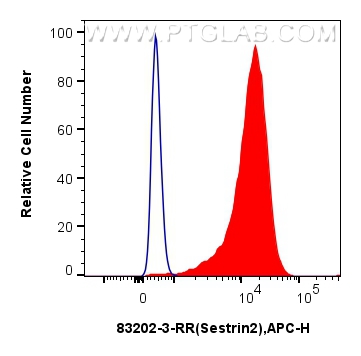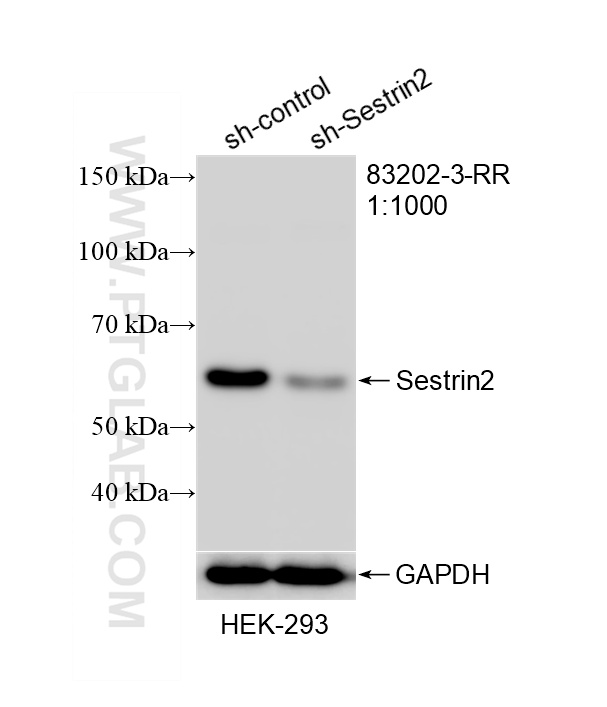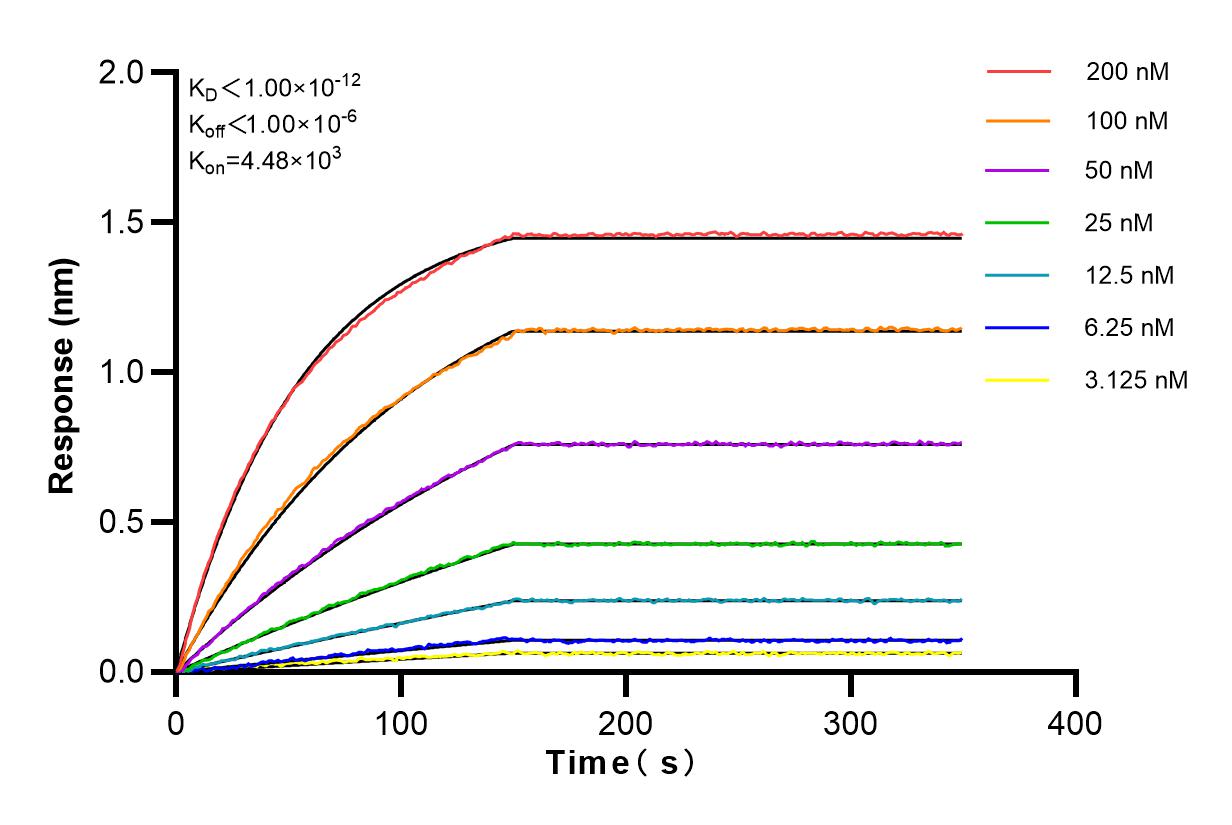验证数据展示
经过测试的应用
| Positive WB detected in | HeLa cells, HEK-293 cells |
| Positive FC (Intra) detected in | HEK-293 cells |
推荐稀释比
| 应用 | 推荐稀释比 |
|---|---|
| Western Blot (WB) | WB : 1:5000-1:50000 |
| Flow Cytometry (FC) (INTRA) | FC (INTRA) : 0.25 ug per 10^6 cells in a 100 µl suspension |
| It is recommended that this reagent should be titrated in each testing system to obtain optimal results. | |
| Sample-dependent, Check data in validation data gallery. | |
产品信息
83202-3-RR targets Sestrin 2 in WB, FC (Intra), ELISA applications and shows reactivity with human samples.
| 经测试应用 | WB, FC (Intra), ELISA Application Description |
| 经测试反应性 | human |
| 免疫原 |
CatNo: Ag1247 Product name: Recombinant human Sestrin2 protein Source: e coli.-derived, PGEX-4T Tag: GST Domain: 132-480 aa of BC013304 Sequence: HMAEFLQTGGDPEWLLGLHRAPEKLRKLSEINKLLAHRPWLITKEHIQALLKTGEHTWSLAELIQALVLLTHCHSLSSFVFGCGILPEGDADGSPAPQAPTPPSEQSSPPSRDPLNNSGGFESARDVEALMERMQQLQESLLRDEGTSQEEMESRFELEKSESLLVTPSADILEPSPHPDMLCFVEDPTFGYEDFTRRGAQAPPTFRAQDYTWEDHGYSLIQRLYPEGGQLLDEKFQAAYSLTYNTIAMHSGVDTSVLRRAIWNYIHCVFGIRYDDYDYGEVNQLLERNLKVYIKTVACYPEKTTRRMYNLFWRHFRHSEKVHVNLLLLEARMQAALLYALRAITRYMT 种属同源性预测 |
| 宿主/亚型 | Rabbit / IgG |
| 抗体类别 | Recombinant |
| 产品类型 | Antibody |
| 全称 | sestrin 2 |
| 别名 | SESN2, Sestrin2, 240034H3, EC:1.11.1.-, Hi95 |
| 计算分子量 | 54 kDa |
| 观测分子量 | 54 kDa |
| GenBank蛋白编号 | BC013304 |
| 基因名称 | SESN2/Sestrin 2 |
| Gene ID (NCBI) | 83667 |
| RRID | AB_3670890 |
| 偶联类型 | Unconjugated |
| 形式 | Liquid |
| 纯化方式 | Protein A purification |
| UNIPROT ID | P58004 |
| 储存缓冲液 | PBS with 0.02% sodium azide and 50% glycerol, pH 7.3. |
| 储存条件 | Store at -20°C. Stable for one year after shipment. Aliquoting is unnecessary for -20oC storage. |
背景介绍
SESN is a family of highly conserved, stress-inducible genes that can defend the cell against oxidative damage and oncogenic signaling. SESN2 ,which belongs to the SESN family, has been implicated as a tumor suppressor that can inhibit angiogenesis and promote autophagy, underscoring the importance of elucidating the molecular mechanism by which SESN2 regulates pathways of metabolism and survival.(PMID:22363791).
实验方案
| Product Specific Protocols | |
|---|---|
| FC protocol for Sestrin 2 antibody 83202-3-RR | Download protocol |
| WB protocol for Sestrin 2 antibody 83202-3-RR | Download protocol |
| Standard Protocols | |
|---|---|
| Click here to view our Standard Protocols |





